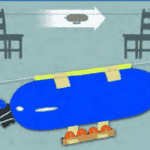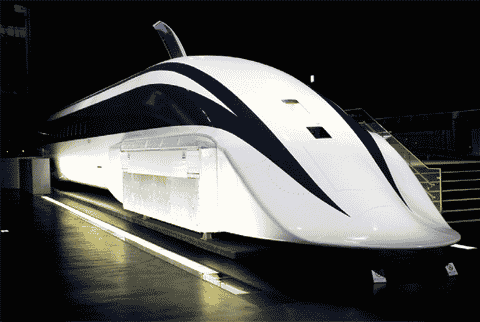Overview
STEM careers
Time
Materials
Per class:
|
Per Group of 3-4 Students:
|
Instructions
Students design, test, and retest a transportation device that must meet certain design constraints and travel along a line with a minimum amount of friction to slow it down.
PREPARATION:
Tie or tape the fishing line from a chair at one end of the room to a chair at the other end of the room. Make sure the line is taut. (Increase length of the line for older students; decrease it for younger students.)
ACTIVITY:
- Divide class into groups of 3 or 4. Ask: “How can you use these materials to make a transportation device that carries passengers quickly along the line?”
- Tell students the design constraints. The device must:
- Carry a minimum of 4 people (pennies)
- Be fast moving
- Look fun to travel in
- Be able to be attached and removed again and again for testing
- Tell students the challenge: The design that carries the most passengers safely (without crashing or spilling), and without stopping along the line, is the winner. In case of a tie, the fastest carrier is the winner.
- Discuss student ideas, and then give students time to sketch their designs.
- Monitor student teams as they build, test, evaluate, and redesign their devices. Give students time to test their designs before the final run. Help students as necessary:
- If pennies fall out of carrier: Make sure the carrier has a big enough place to hold the pennies and is well balanced.
 If carrier goes slowly or stops partway: See if students have reduced friction as much as possible. They can: (1) make the part of the carrier touching the line as slippery as possible by using a smooth, hard material like plastic; or (2) adjust how hard the carrier presses on the line by hooking it on at two or more points.
If carrier goes slowly or stops partway: See if students have reduced friction as much as possible. They can: (1) make the part of the carrier touching the line as slippery as possible by using a smooth, hard material like plastic; or (2) adjust how hard the carrier presses on the line by hooking it on at two or more points.- If line sags: Check the tension of the line (tighten, if necessary). If a carrier is very heavy, encourage ways to lighten it.
- When devices are final, test them out with a final run on the line. Discuss the results.
Guiding questions
- How can you fit all of your passengers so that they don’t fall out?
- What did you do to make your carrier go fast along the line?
- What other material(s) would be great to have on hand to make your carrier go even faster?
Engineering & science connections
- Friction is a force that resists motion. Friction on a surface can make moving objects slow down, or make stationary objects difficult to start moving.
- Transportation engineering is a very important field of engineering. As populations grow, more and more people are living in high-density areas, and efficient transportation methods are needed to get them around. How bad can things get without good public transportation? In August 2010 in China, there was a 62-mile long traffic jam that lasted 12 days!
- In 1932, a mechanical engineer invented a type of welding that could weld together panels of stainless steel. This invention, along with a diesel engine, enabled construction of the train Pioneer Zephyr. The Zephyr’s diesel electric engine, sleek new design, shovel nose power car, raked lead windshield, and lower center of gravity all allowed it to travel faster than any other train of its time.
- Today, the fastest train in the world can go 374 miles per hour and is called the Maglev bullet train. This train uses electromagnets to create both lift and propulsion, and thereby eliminate any friction from tracks.
This activity is based on one of a series of engineering design challenges in Heroes of Engineering from ASME.


0 Comments